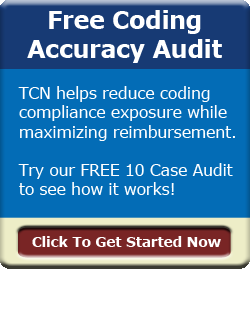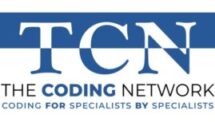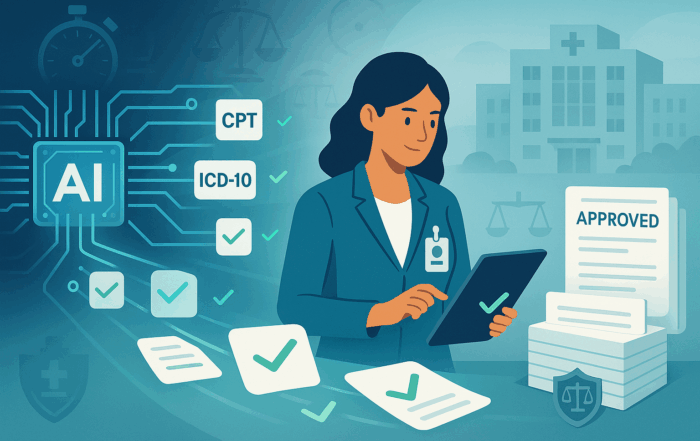Radiology Coding
Diagnostic radiology is a high-volume specialty for which coding precision is vital. The problems that diagnostic radiology coders encounter are numerous. Considering the high numbers of studies they read and interpret, diagnostic radiologists are not known to be overly wordy in their dictations. Reports can consist of just a few words, and coders can make no assumptions. Orders from requesting physicians are often necessary for the coder to determine the medical necessity of the exam, but they are frequently unavailable or archived in a different system. There is often confusion between what was ordered and what was actually performed. Additional studies need documented justification. Medical necessity for any additional tests is critical for both reimbursement and compliance. Fraud-and-abuse by a few “bad apples” has brought diagnostic radiology to the attention of the OIG and RAC investigators. In view of the proliferation of freestanding imaging centers, the accurate use of modifiers is essential. Many hospitals and imaging centers have the technicians check-off codes “superbills” or charge tickets; it is common to find that they haven’t been updated in many years and contain numerous obsolete procedure and diagnostic codes. Using a technician’s codes or the referring physician’s diagnosis can create an immediate disconnect — they may be totally different than what the radiologist says in his/her report. The technician may not keep up-to-date with all of the NCCI edits and may inadvertently unbundle global services.
Radiologists often use independent billing companies to bill and collect and manage their receivables. There is a trend in the billing business to send back-office tasks, including coding, to low-cost offshore contractors in India, China, and the Philippines. This is often times done without the radiologists’ permission or knowledge. Those contractors often claim to have legions of certified coders, but how do you know who is coding your reports? If they are certified, how do you know that they have diagnostic radiology coding experience and specialty-specific supervision and in-service education? The purpose of off-shoring is to lower labor costs and increase profits. In a high-volume specialty such as diagnostic radiology, you risk that they emphasize high speed “heads-down” production, with accuracy being an afterthought. What about confidentiality? HIPAA can’t be enforced in Mumbai or Hyderabad; what if one of their workers brings a thumb-drive to work to copy files and then sells it to an identify theft ring?
Add to the mix the fairly recent trend in radiology to add computer assisted coding (CAC) applications to their radiology information systems. Their sales representatives promise 80% to 90% or even higher coding accuracy rates, and that the practices or billing companies can eliminate nearly all of their coding positions. Their very attractive presentaions make promises that unfortunately just can’t be kept. CAC systems are simply “not ready for prime time.” Our hands-on use of the industry’s leading CAC systems has demonstrated that their accuracy rates, even after their CAC “engines” have had time to “learn” from the practices’ corrections, are generally below 50%. The OIG auditors require 95%. This is an invitation for a compliance or revenue disaster. Plus, without having a coder review the entire CAC output, how do you know which claim is accurate and which one isn’t?
The Coding Network considers the CAC systems to be valuable productivity enhancing tools. A number of our clients have engaged us to remotely access and use their CAC systems. CAC can make a skilled diagnostic radiology coder faster and more productive (which is reflected in our reduced coding fee,) but they are not a coding solution. They can not replace coders.
Diagnostic Radiology Coding Background
- Directed by a nationally recognized diagnostic radiology coding and reimbursement expert who is a certified codert.
- Decades of radiology coding experience at a major medical schools, tertiary and community hospitals, and imaging centers.
- A team of certified coders specializing only in diagnostic radiology coding.
Radiology Coding Need
- The volume of radiologic studies has grown explosively, making the shortage of certified coders with extensive training and experience in radiology coding more acute.
- Radiology coder turnover creates cash flow peaks and valleys.
- Few radiology coders are certified, a symbol of career commitment and quality coding.
- Diagnostic radiology coding has a variety of subspecialties including Ultrasound, CAT, MRI, PET, Mammography, that span a broad spectrum of coding guidelines and regulations.
Radiology Coding Solution
- TCN’s radiology coding services address the entire spectrum of diagnostic radiology modalities.
- We’ll code your reports within 2-to-3 working days.
- All coding is done in the United States of America by certified coders specializing in diagnostic radiology.
- Send us your reports by FedEx/UPS or electronically. We can remotely access your RIS, EMR, CAC, or report archive.
- At no additional charge, we will identify your radiologists’ documentation deficiencies to improve the quality of your medical records and optimize reimbursement.
- Our volume-driven per-report pricing model is inexpensive and our team of coders stabilizes cash flow performance.
- A practical solution for your radiology coding needs to improve coding accuracy, reimbursement, and documentation and reduce your compliance exposure.
Radiology Coding Services
- Ongoing radiology coding services for all or part of your caseload.
- Second opinion coding.
- Temporary radiology coding coverage for vacations and sick leave.
- Backlog coding resolution services.
- Physician documentation training services.
- Coding compliance review services.
- Radiology coding “helpline” services.

Latest Blog Posts:
Why Human Oversight in AI Medical Coding Remains Essential in 2025
The emergence of AI in medical coding is invariably impacting healthcare and traditional workflows and resource allocation. Yet, as AI platforms tout accuracy rates exceeding 90%, a critical question persists: Can autonomous coding stand alone? [...]
AI Medical Coding Is Fast—Until Compliance Slows You Down
Why Human Validation Is Now Mission‑Critical (and How to Add It Overnight) Artificial‑intelligence engines from Aidéo, Fathom, Nym, 3M, and others are transforming medical coding speed. Yet payers haven’t lowered the bar— they’ve raised it. Humana, [...]
How to Dodge the Holiday Coding Backlog – Without Adding Full‑Time Staff
Summer vacations fill the calendar, and Labor Day marks the starting line of a four‑month holiday sprint. For revenue‑cycle leaders, that means one thing: charts start stacking up on Friday, coders walk in Monday to a [...]
Need Professional Medical Coding Assistance: Why Using Your Doctors To Code Is Not Free
In today’s fast-paced healthcare environment, efficiency and accuracy are non-negotiable. Every medical practice, hospital, and healthcare system strives to optimize revenue, ensure compliance, and deliver exceptional patient care. One area that often flies under the [...]




